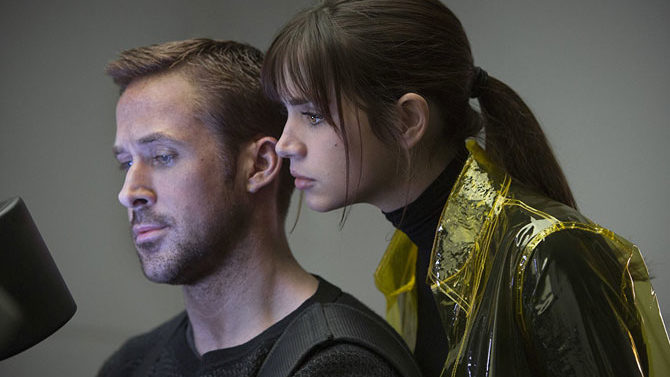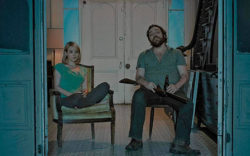Thirty-five years have passed since Harrison Ford’s Rick Deckard and Sean Young’s replicant Rachael rode off after that unicorn, and Ridley Scott’s sci-fi film has become a genre titan. Blade Runner’s neo-noir trappings have been emulated by so many subsequent films, video games, literature and concept albums that its name has become a shorthand descriptor of the sci-fi aesthetic it created. Blade Runner became so important it was the first VHS tape I bought when I started collecting movies. A sequel has been hinted at, rumored and promised so often that it’s hard to believe Blade Runner 2049 has finally fulfilled that promise with more success than failure.
Thirty years after Deckard disappeared, a new Blade Runner coded K (Ryan Gosling) is hunting for runaways. Soon, K uncovers a revelation that could shake humanity to its foundation. This bombshell leads him to the headquarters of replicant manufacturer Niander Wallace (Jared Leto) and, eventually, to the “retired” Deckard, who is hiding in the bombed-out remains of Las Vegas.
Despite the significance of Blade Runner 2049’s revelations, it treats little of its narrative with anything approaching urgency. Additionally, it lasts nearly three hours, which hinders the multiple viewings begged by a film with such natural density. I doubt I digested all of its philosophical musings, nor did I open its every visual gift after only one viewing; my initial critical misgivings might melt after multiple engagements. Nevertheless, my initial reaction is detached.
The film rather quickly reveals that Gosling’s K is a replicant, a fact that should re-intensify the long-held theory that Deckard is one, too. As a result, Gosling is more sedate than usual—remaining in the Ridley Scott-verse, Michael Fassbender’s David is an emotional hurricane compared to K—and Ford does not gruffly awaken everyone until what is nearly the third hour (counting trailer minutes). Gosling quietly restrains K’s power but erupts in often defensive violence to remind everyone that the dude is a terminator. Still, his distance makes emotional investment a struggle. About whom is the audience supposed to care? K? Deckard, by default? Ana de Armas’ pretty hologram, Joi? (She’s certainly the film’s standout new addition.) Deckard’s sad, old dog?
Naturally, Blade Runner 2049 does not flounder visually. Thankfully, Denis Villeneuve, director of photography Roger Deakins, production designer Dennis Gassner, the team of art directors and hundreds of other crew build a world no one will want to leave for three hours. (Though, oddly, the world is a relatively empty one, with scenes rarely containing more than three people at once.) As dazzling as the cityscapes are, they lack the first film’s marvel. Blade Runner 2049 needs to wow modern audiences with more than its style, which is copped from 1982 and has been previously refashioned so often it is now de rigueur for the genre. Every post-Blade Runner sci-fi film takes place in this post-cyberpunk, industrial metropolis; even a fruitless effort like Ghost in the Shell has “special” FX.
Villeneuve, in his second straight heady-science-fiction film (though Arrival is equally brainy and heart-wrenching), gets mildly lost in this labyrinthine mindtrap. Does Blade Runner 2049 keenly pierce the veil of existence and self-determination? Perhaps; I do already want to see it again to further test the final product versus its weighty expectations. Will it be hailed as a classic, a modern masterpiece, when it nears 40? Its chances would rise exponentially if it were briefer (none of the five cuts of the original needed even two hours) and more narratively urgent. Blade Runner 2049 exemplifies the “Great, but…” film.
Like what you just read? Support Flagpole by making a donation today. Every dollar you give helps fund our ongoing mission to provide Athens with quality, independent journalism.










